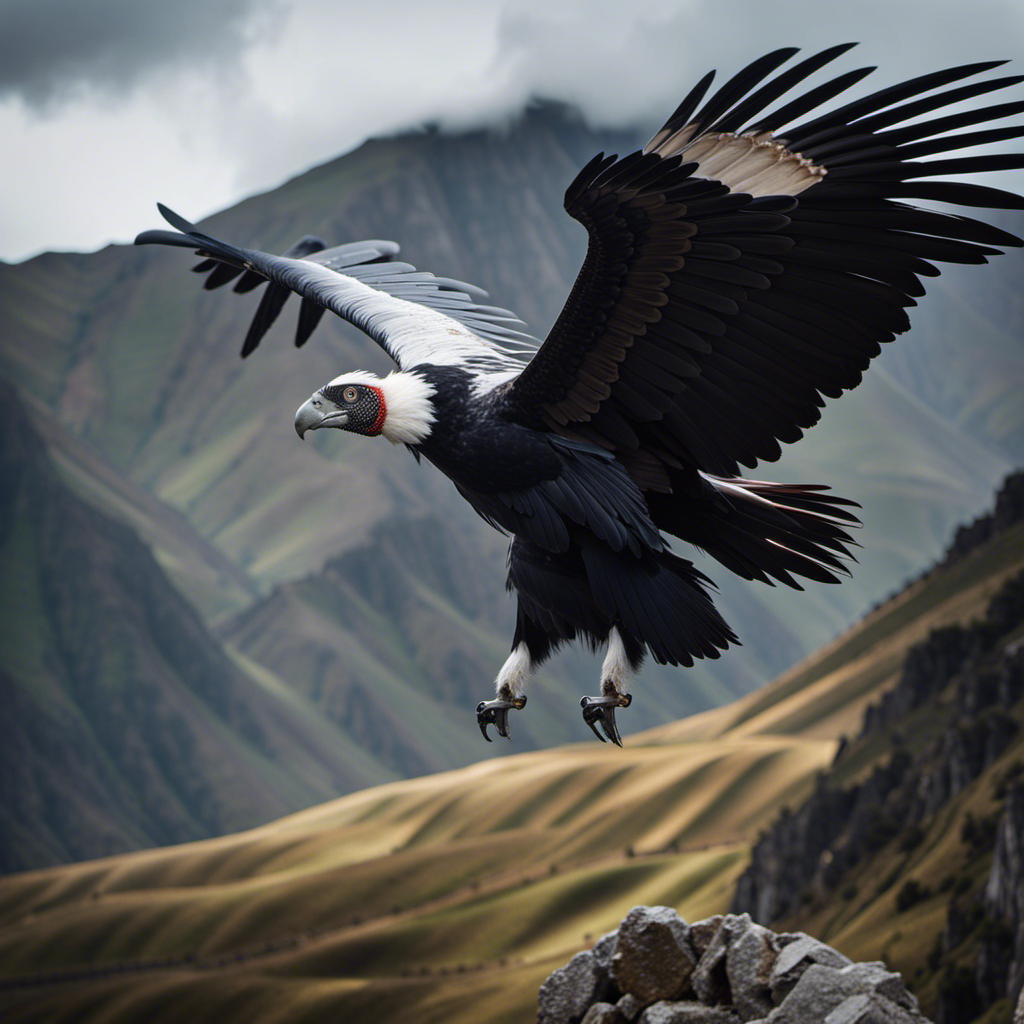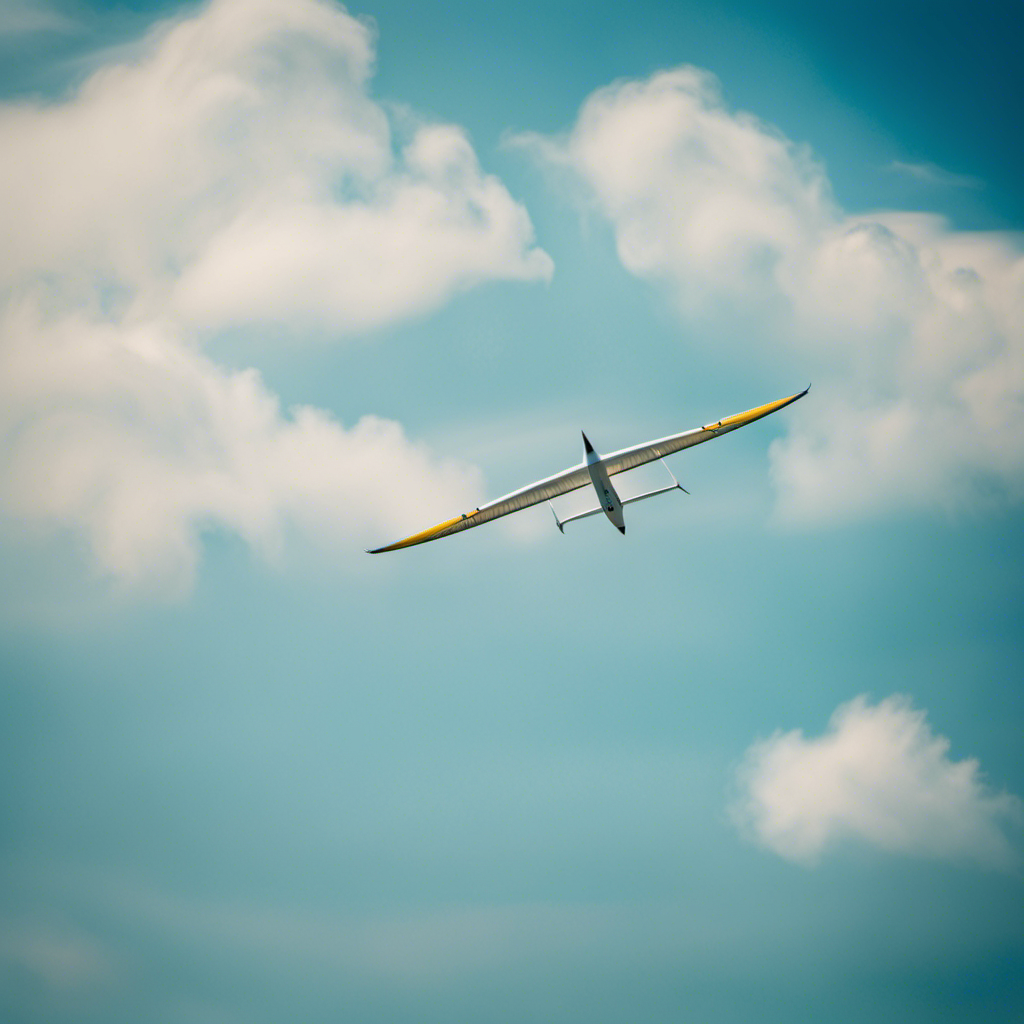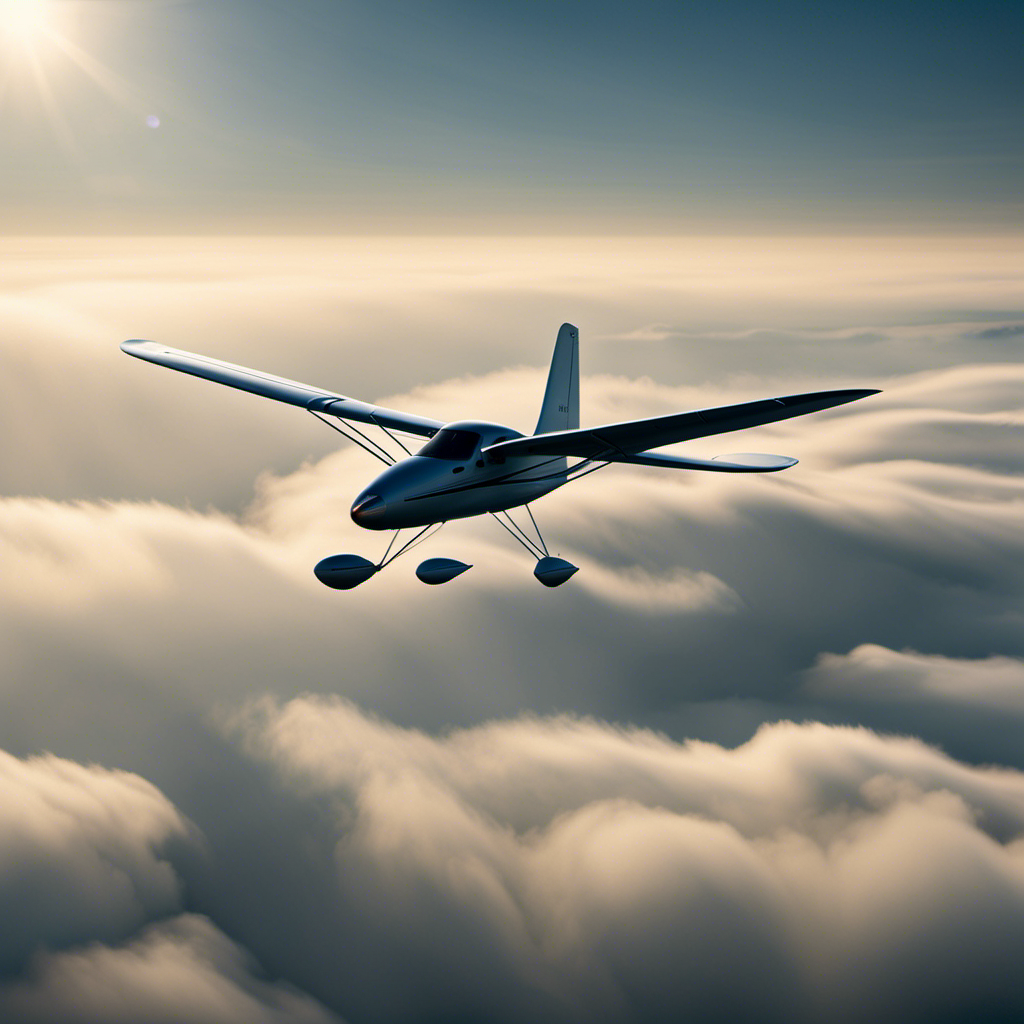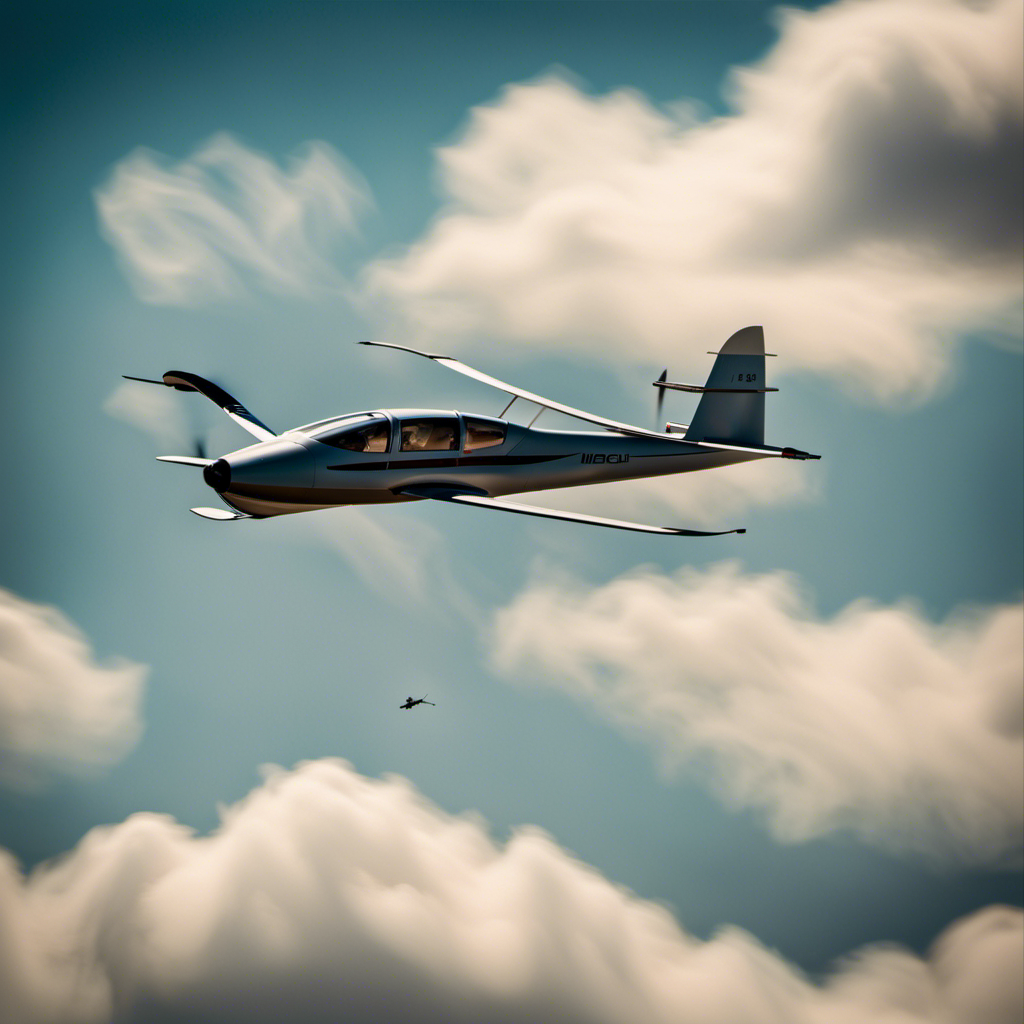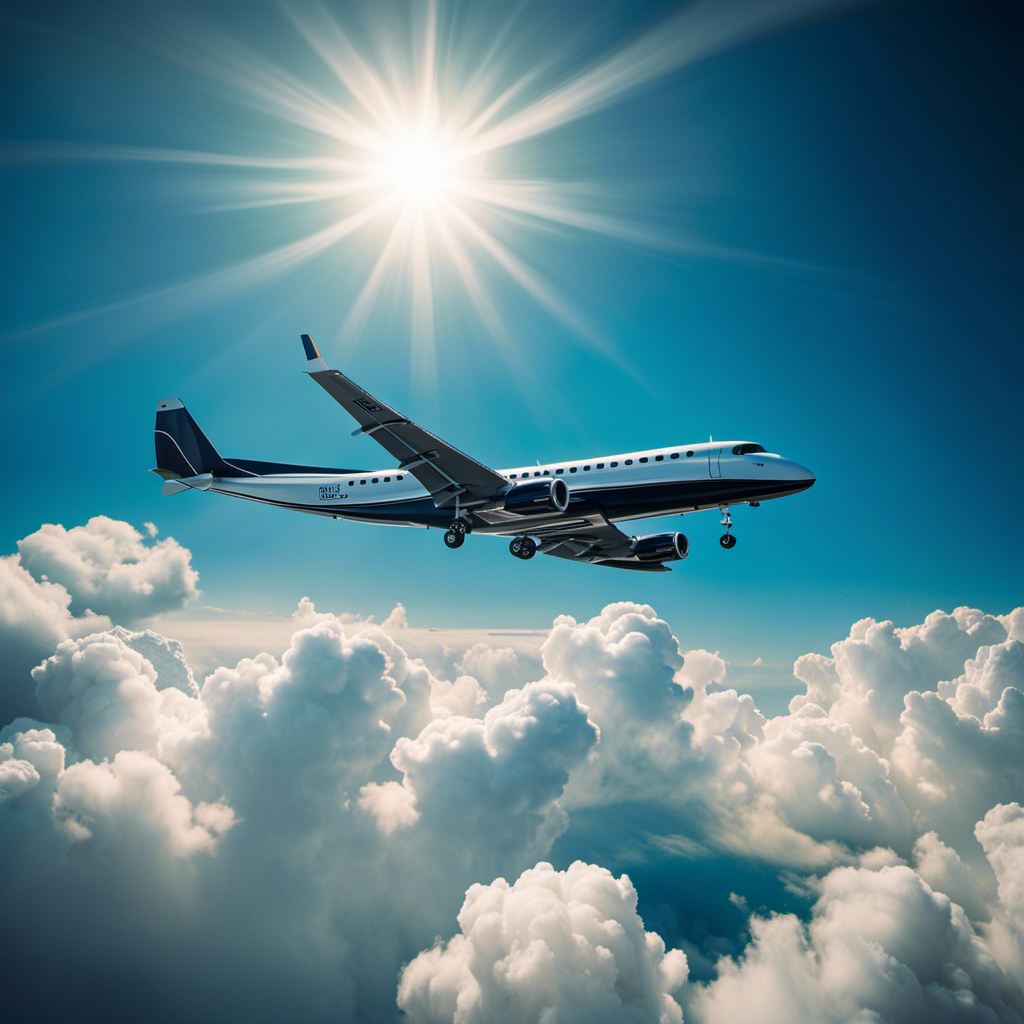Have you ever looked up at the sky, marveling at the graceful flight of birds? It’s truly impressive how effortlessly they soar through the air, don’t you think?
But have you ever wondered which bird holds the title for the highest soaring? Prepare to be amazed as we delve into the world of avian flight, exploring the mechanics, science, and adaptations of soaring birds.
Get ready to discover the winner in our quest to uncover the highest soaring bird.
Key Takeaways
- Rüppell’s vulture holds the altitude record for flying at 37,000 feet.
- Soaring height is influenced by wind speed and different wind patterns.
- Birds use visual cues and their sense of wind direction and speed to find thermals and updrafts.
- Soaring is important for conserving energy and covering long distances.
The Fascinating World of Avian Flight
Did you know that the highest soaring bird is the Ruppell’s vulture, reaching altitudes of over 37,000 feet?
Avian flight is a fascinating world that showcases the remarkable abilities of birds to navigate and sustain flight. Birds achieve soaring by utilizing a combination of physical adaptations and environmental factors. Understanding the mechanics of bird soaring is crucial in unraveling the secrets behind their impressive aerial abilities.
By harnessing thermal updrafts, birds are able to ascend to great heights without expending much energy. These updrafts are created by warm air rising from the earth’s surface and can be found in specific geographic regions. Additionally, birds use their wings and body position to optimize lift and minimize drag, allowing them to effortlessly glide through the air.
Transitioning into the next section, let’s delve deeper into the intricacies of avian flight.
Understanding the Mechanics of Bird Soaring
You can better understand how birds glide through the air by studying the mechanics of their flight. When birds soar, they take advantage of the air currents and thermals to stay aloft without flapping their wings. The key to their soaring ability lies in their wing shape and design.
Birds have long, slender wings that are curved on top and flat underneath. This shape allows for the generation of lift as air flows over the wings. Additionally, birds adjust the angle of their wings and tail to control their flight and maintain stability. Understanding these mechanics is crucial in unraveling the secret behind their impressive soaring capabilities.
The Role of Wingspan in Soaring Heights
To understand how birds reach impressive heights while soaring, it’s important to consider the role of wingspan. The wingspan of a bird refers to the distance from the tip of one wing to the tip of the other when fully extended.
Birds with larger wingspans have a greater surface area, which allows them to generate more lift. Lift is the force that counteracts gravity and keeps the bird in the air.
Additionally, a larger wingspan provides greater stability and maneuverability, enabling birds to navigate through different air currents with ease.
By adjusting the position and angle of their wings, birds can optimize their wing loading, which is the ratio of the bird’s weight to the surface area of its wings. This optimization allows birds to soar effortlessly and maximize their altitude.
Understanding the role of wingspan is just one facet of the science behind bird soaring abilities.
The Science Behind Bird Soaring Abilities
By studying the science behind how birds soar, you can gain a deeper understanding of their impressive abilities. Soaring is a phenomenon that allows birds to effortlessly travel through the air for extended periods without flapping their wings. It is a result of their unique anatomical features and their ability to utilize the power of air currents.
Birds have specially adapted wings that enable them to generate lift and maintain altitude. The shape and structure of their wings, along with the distribution of feathers, play a crucial role in maximizing lift and minimizing drag. Additionally, birds have the ability to sense air currents and adjust their flight accordingly, allowing them to ride thermals and updrafts. This intricate understanding of aerodynamics and their ability to harness the power of the wind enable birds to soar to great heights.
As we delve into the discussion of the highest soaring bird, it is important to consider the top contenders for this title.
The Top Contenders for the Highest Soaring Bird
When it comes to impressive soaring skills, the Andean Condor stands out as a top contender. With a wingspan of up to 10 feet, this majestic bird is known for effortlessly riding thermal currents for hours on end.
Another formidable contender is the Albatross, which is renowned for its ability to undertake long-distance soaring flights, covering thousands of miles without flapping its wings.
Lastly, the Golden Eagle deserves mention for its remarkable soaring feats. It utilizes its broad wings and powerful flight muscles to soar high above mountain ranges and effortlessly traverse vast distances.
The Andean Condor’s Impressive Soaring Skills
The Andean Condor’s impressive soaring skills make it one of the highest soaring birds in the world. Its ability to stay aloft for extended periods is truly remarkable. Here are three key factors that contribute to the Andean Condor’s exceptional soaring abilities:
-
Wingspan: The Andean Condor boasts an impressive wingspan of up to 10.5 feet, allowing it to catch thermal updrafts more efficiently and stay airborne for longer durations.
-
Feather Structure: The condor’s specialized feathers have unique adaptations that enhance its flight. These feathers are strong yet flexible, reducing drag and increasing maneuverability during soaring.
-
Thermal Utilization: The Andean Condor has the ability to locate and exploit thermals, which are columns of rising warm air. By skillfully navigating these thermals, the condor can gain altitude without expending much energy.
Transitioning to the next section about the albatross and its long-distance soaring, we can explore another remarkable avian species that excels in traversing vast distances through the air.
The Albatross and its Long-Distance Soaring
Moving on from the impressive soaring skills of the Andean Condor, let’s now turn our attention to another remarkable bird: the Albatross.
With its long, slender wings and exceptional flight endurance, the Albatross is renowned for its ability to effortlessly glide over vast stretches of ocean. This magnificent seabird is specially adapted to exploit the powerful winds found in the open seas, using them to stay aloft for days or even weeks at a time.
Equipped with a keen sense of navigation and a remarkable ability to locate food sources, the Albatross can cover incredible distances during its flights, reaching speeds of up to 80 kilometers per hour.
As we delve into the Albatross’s long-distance soaring capabilities, we will uncover the secrets behind its incredible feats and witness its mastery of the skies.
And now, let’s explore the golden eagle’s soaring feats.
The Golden Eagle’s Soaring Feats
Unlike the Albatross, the Golden Eagle relies on its powerful wings and keen eyesight to effortlessly glide through the skies. This majestic bird, known for its impressive soaring feats, possesses several remarkable characteristics that enable it to reach great heights and cover vast distances.
-
The Golden Eagle has a wingspan of up to 7 feet, allowing it to catch thermals and ride the air currents with ease. Its broad wings are designed for efficient gliding, minimizing energy expenditure during flight.
-
With its acute vision, the Golden Eagle can spot prey from great distances, ensuring a constant food supply while soaring. This bird possesses strong flight muscles, enabling it to maintain flight for extended periods without tiring.
-
The Golden Eagle’s streamlined body and pointed wings reduce air resistance, further enhancing its soaring capabilities.
These factors contribute to the Golden Eagle’s ability to soar at impressive heights, but what exactly determines their soaring height?
Factors That Determine Soaring Height
One of the factors that determines soaring height is wind speed. Birds rely on the wind to provide the necessary lift and upward force for sustained flight. Different wind patterns, such as thermals and updrafts, can greatly influence a bird’s ability to soar to higher altitudes. These natural phenomena occur due to the heating and cooling of the Earth’s surface, creating pockets of warm air that rise and cooler air that sinks.
To further understand the relationship between wind speed and soaring height, let’s take a look at the following table:
| Wind Speed (mph) | Soaring Height (feet) |
|---|---|
| 0-5 | Low |
| 5-10 | Moderate |
| 10-15 | High |
As wind speed increases, birds are able to take advantage of stronger updrafts, allowing them to reach greater heights. However, it is important to note that other factors, such as wing shape and size, also play a significant role in determining a bird’s ability to soar.
Now, let’s explore how birds find thermals and updrafts, crucial elements for achieving soaring heights.
How Do Birds Find Thermals and Updrafts?
Now that you understand the factors that determine soaring height, let’s delve into how birds find thermals and updrafts. These natural phenomena are essential for birds to reach great heights and stay aloft for extended periods.
To find thermals and updrafts, birds rely on their acute senses and specific behaviors, including:
-
Visual cues: Birds scan the landscape for visual indicators such as rising columns of warm air, smoke, or dust that signal the presence of thermals.
-
Wind patterns: They use their keen sense of wind direction and speed to detect updrafts created by the interaction of wind with the terrain.
-
Group behavior: Birds often follow each other’s flight patterns, observing their companions to locate and take advantage of thermals and updrafts.
Understanding how birds navigate these natural phenomena is crucial because soaring is not just an impressive feat, but a matter of survival.
The Importance of Soaring for Birds’ Survival
Finding thermals and updrafts is crucial for your survival as a bird. These natural phenomena allow you to reach great heights and stay aloft for extended periods. Soaring on the currents of air conserves energy and allows you to cover vast distances without expending too much effort.
Utilizing thermals, which are columns of warm rising air, is key. They enable you to gain altitude effortlessly and maintain flight for longer durations. Updrafts, on the other hand, are created when wind encounters an obstacle like a cliff or a mountain. They lift the air upwards, providing you with the lift needed to continue soaring.
Understanding and exploiting these atmospheric conditions is vital for your survival and successful migration. Now, let’s explore the amazing adaptations of soaring birds.
The Amazing Adaptations of Soaring Birds
Utilizing your exceptional wingspan and lightweight bones, you effortlessly ride the air currents, allowing you to cover vast distances with minimal effort. Soaring birds possess remarkable adaptations that enable them to navigate the skies with ease.
Their long, slender wings are perfectly designed to catch the air and generate lift, while their hollow bones reduce their overall weight, making flight more efficient. Additionally, these birds have keen eyesight, which aids in spotting thermals – pockets of warm air that provide extra lift. By circling within these thermals, they can gain altitude without expending much energy.
Furthermore, their streamlined bodies and ability to adjust their wing shape and angle allow them to maneuver through the air with precision. With these incredible adaptations, soaring birds have evolved to become true masters of the skies.
As we transition to the next section and reveal the highest soaring bird, it is important to note that these adaptations vary among different species. Now, let’s explore the winner and discover the extraordinary heights it can reach in its quest for flight supremacy.
The Winner: Revealing the Highest Soaring Bird
As you dive into the next section, prepare to be amazed by the incredible heights reached by this champion of the skies. The winner for the highest soaring bird is none other than the Rüppell’s vulture. Here’s why it deserves the title:
-
Altitude record: Rüppell’s vulture has been recorded flying at an astonishing altitude of 37,000 feet, making it the highest flying bird known to man.
-
Adaptations for high altitude: To survive in such extreme conditions, Rüppell’s vulture has developed unique adaptations including a highly efficient respiratory system, specialized feathers for insulation, and a large wingspan for increased lift.
-
Feeding habits: Rüppell’s vulture is a scavenger, relying on its exceptional soaring abilities to locate carrion from great distances and reach remote carcasses in inaccessible areas.
-
Conservation status: Unfortunately, Rüppell’s vulture is considered endangered due to habitat loss, poisoning, and other human-induced factors, highlighting the importance of conservation efforts to protect this remarkable species.
Frequently Asked Questions
How do birds navigate and find their way while soaring?
Birds navigate and find their way while soaring through various methods such as using landmarks, celestial cues, magnetic fields, and their keen sense of vision. These adaptations allow them to efficiently navigate and reach their desired destinations.
What are the different types of thermals and updrafts that birds use for soaring?
Birds use various types of thermals and updrafts for soaring, including ridge lift, thermal lift, and convergence lift. Ridge lift occurs when wind is forced upward by a hill or mountain, creating an upward draft. Thermal lift is created when the sun heats the ground, causing warm air to rise. Convergence lift happens when two air masses meet and are forced upward, creating lift for soaring birds.
Do all bird species have the ability to soar, or is it limited to certain groups?
Not all bird species have the ability to soar. Soaring is limited to certain groups, such as raptors and seabirds. These birds have specific adaptations, such as long wings and a lightweight body, which allow them to efficiently use thermals and updrafts for sustained flight.
Can birds soar for extended periods of time without flapping their wings?
Birds are capable of soaring for extended periods of time without flapping their wings. This behavior, known as dynamic soaring, is primarily observed in seabirds such as albatrosses and is enabled by their unique wing shape and the utilization of wind patterns.
How do birds conserve energy while soaring and what are the advantages of this flight technique?
Birds conserve energy while soaring by using thermals and updrafts to gain altitude and gliding to cover long distances. This flight technique allows them to travel hundreds of miles without flapping their wings, reducing muscle fatigue and saving energy.
Conclusion
In conclusion, the fascinating world of avian flight has revealed the highest soaring bird to be the Andean condor. With an impressive wingspan of up to 10 feet, these majestic birds can reach staggering heights of over 15,000 feet.
Their ability to find thermals and updrafts allows them to effortlessly glide through the sky, conserving energy and covering vast distances. This remarkable adaptation not only showcases the incredible capabilities of these birds, but also highlights the importance of soaring for their survival in the wild.
With a heart that soars as high as the skies, Aria, affectionately known as “Skylark,” is the driving force behind Soaring Skyways. Her journey into the gliding world began as a young dreamer gazing up at the soaring birds, yearning to experience the weightlessness and freedom they embodied. With years of experience both in the cockpit and behind the scenes, Aria’s commitment to the gliding community is unwavering.
